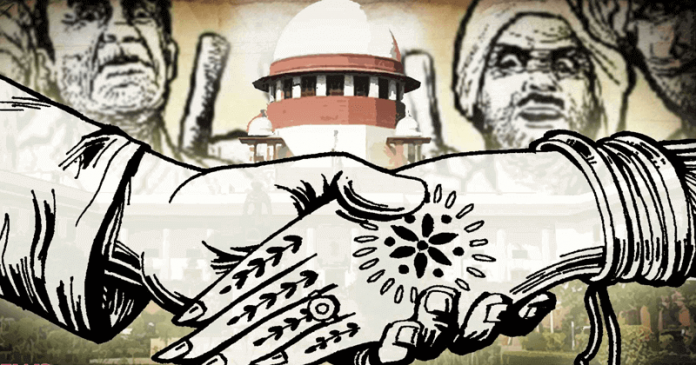This article has been written by Shubhanshu Singhai pursuing Diploma in US Corporate Law for Company Secretaries and Chartered Accountants and edited by Oishika Banerji (Team Lawsikho).
This article has been published by Sneha Mahawar.
Table of Contents
Introduction
There have been many prominent historical moments in the Indian freedom struggle which have helped India to gain independence and fight against the cruel rule of the Britishers. Some of them are the Indian Rebellion of 1857, the Salt Satyagraha, the Quit India Movement, and the Non-Cooperation Movement (1920-1922). It was the dark day of 2nd February 1922 when the non-cooperation movement was catching momentum and the cruel Britishers opened firing on the protestors in the city of Chauri Chaura, of Gorakhpur district of the united province (modern Uttar Pradesh) which led to a horrific incident in which angry crowd set the police station on fire to take the revenge on the British officers. The incident led to the killing of 26 people, 3 of them were civilians, and the rest 23 were police officers. This protest led to the degradation of the principles of the non-cooperation movement which was non-violence (Ahinsa), Gandhi ji who was the leader of this movement called it off after getting to know about the incident and the killings. This article talks about the legal implications associated with the Chauri Chaura incident in detail.
Relation of Chauri Chaura incident with Non-cooperation and Khilafat movement
As we have discussed above, the Chauri Chaura incident of being part of the non-cooperation movement took a turn when it was linked with the Khilafat movement which was organized and managed by the Muslim league brought in drastic change and revolution at the moment, the efforts of Mahatma Gandhi were successful and congress which was backing them got their target of national integration successful. It resulted in the successful integration of the spirit of nationalism and brotherhood between the Muslims and the Hindus. Both of the movements integrated to be a pan-Indian Movement against the British.
Major events which led to this mishap
On that dark day of 2nd February 1922, the protestors entered the market of Chauri Chaura with the intention of peaceful protest against the unethical taxing practices of the British Government which aimed to forcefully take money from already poor Indians. While the protest was ongoing, from nowhere, the police attacked them and ended up arresting some of their leaders which resulted in anger among many. After a few days on the 5th of February, they gathered a mass crowd of around 2500 people who then started yelling loudly towards the police to free their leaders, as they were not wrong, but the police did not listen to them.
After some time when there was no sign of the protestors calming down, the police officers decided to give the order to fire in the sky as a warning shot to disperse the crowd. The protestors got more enraged they started pelting stones at the police. Left with no other option, the police sub-inspector instructed his officer to open fire on the protestors, killing three of them.
The dissenters, looking for revenge for the deaths that occurred, kept terrifying the police by drawing nearer to them until the tremendously dwarfed officials had to escape by taking asylum in the Chauri Chaura police headquarters. This strategy misfired as the angered horde was unafraid to set the police headquarters ablaze while its occupants were inside. Numerous Indian cops and ‘chaprassis,’ or official couriers, were caught inside the Chauri Chaura police headquarters, which was fiercely burning. Afterward, it was uncovered that 22 cops had died in the episode, a significant number of them had been killed at the station’s entry as they endeavored to escape the flares.
Mahatma Gandhi’s reaction
Gandhi Ji’s reaction was unexpected at that time as he reprimanded the homicide of cops as wrongdoing. To show “certified compassion” and look for compensation, the worker associations in the contiguous towns were dissolved. He formed the Chauri Chaura Support fund to support the affected inspectors’ families, Gandhi pursued the choice to stop the Non-Cooperation Movement since he accepted it had been influenced to the violent path (Hinsa). He constrained the Congress Working Committee to agree with his requests.
Legal implications of the Chauri Chaura incident
All the selfish British officers who were proud of them being white and thought of themselves as supreme prevailed in a justice and tribunal system, which can be called today a mass murder of the judiciary and justice system. 172 people were given capital punishment for the incident without any supporting proof, evidence, or witness, the incident a white military man named Sergeant Andrew who want to take the range from the crowd went out of the nearby villages after gaining vigilance over the station and brought in hundreds of men in small carriages where there was no space and everyone was dying for some drops of water. There were neither witnesses nor evidence nor pleaders nor jury for the charge, and one day the Appointed Judge Sahib without a second thought, passed the judgment to give capital punishment to 172 people, thereby awarding the death penalty was given for the attack on 21 police officers by the crowd.
While the Sergeant caused the death of not less than 100 men was viewed as honest. The Bihar Bandhu looks at the English arrangement of equity by taking confirmations of two occurrences the Jallianwala Bagh and Chauri Chaura and contends that General Dyer who had killed 1000 individuals in the Jallianwala Bagh was delivered free thereby making ways for injustice for the masses.
One can note that if this incident is put parallel to the concept of personal liberty and Article 21 of the Indian Constitution, the same stands as a gross violation of the fundamental rights of the citizens of the nation. While the Constitution was absent then, principles of human rights and fairness were not unfamiliar. The decision by the court of law in this massacre was indeed in abeyance of such fundamentally established rules of law.
Conclusion
The examples of Chauri Chaura, Moplah, and the Jallianwala Bagh, tell us about the noble justice system of the Britishers and how desperate they were that in order to maintain their ego, they killed many. Although the Chauri Chaura event was an outcome of prompting given by the police to the crowd, the case was known about by the sensible judges of English who prevailed in criminal offense in the name of value by allowing capital disciplines on 172 individuals additionally, transportation for life to more than hundred people and setting free an English Sergeant who was primarily guilty.
Students of Lawsikho courses regularly produce writing assignments and work on practical exercises as a part of their coursework and develop themselves in real-life practical skills.
LawSikho has created a telegram group for exchanging legal knowledge, referrals, and various opportunities. You can click on this link and join:
Follow us on Instagram and subscribe to our YouTube channel for more amazing legal content.














